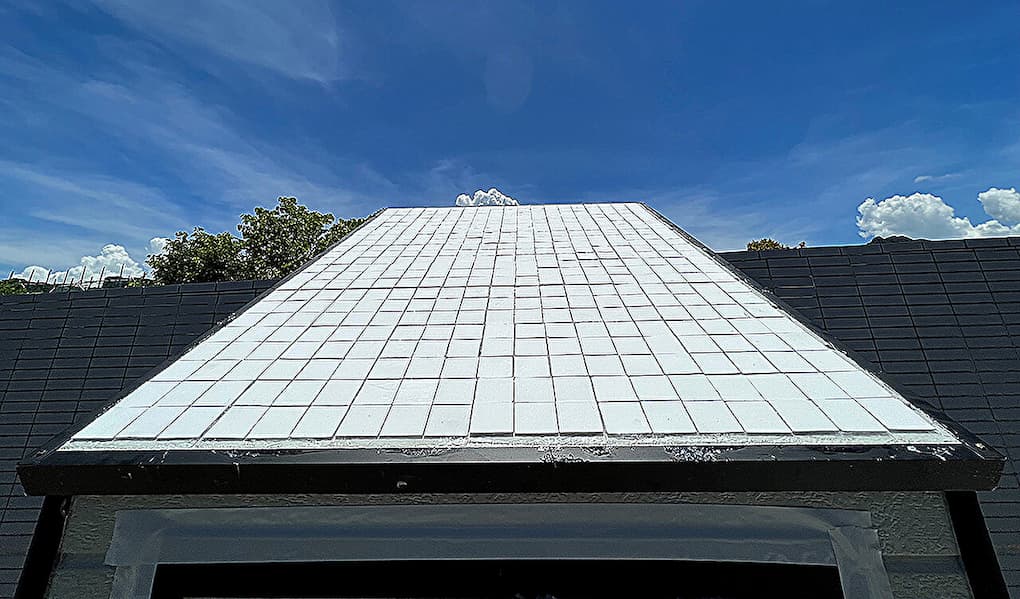A breakthrough in developing a passive radiative cooling (PRC) material has been announced by researchers at City University of Hong Kong, with findings published in Science.
Known as cooling ceramic, the material has achieved high-performance optical properties for energy-free and refrigerant-free cooling generation. The researchers say its cost-effectiveness, durability and versatility make it suitable for commercialisation in many applications, including construction.
By reducing the thermal load of buildings and providing stable cooling performance, the cooling ceramic can enhance energy efficiency.
PRC is considered one of the more promising technologies for curbing soaring demand for space cooling and reducing pollution. Current PRC options have limitations, however, including high cost and compatibility issues.
“But our cooling ceramic achieves advanced optical properties and has robust applicability,” says Professor Edwin Tso Chi-yan, one of the paper’s authors. “The colour, weather resistance, mechanical robustness and ability to depress the Leidenfrost effect – a phenomenon that prevents heat transfer and makes liquid cooling on the hot surface ineffective – are key features ensuring the durable and versatile nature of the cooling ceramic.”
Professor Tso says the cooling ceramic is made of alumina. This provides the desired UV resistance degradation, which is a concern typical of most polymer-based PRC designs.
“It also exhibits outstanding fire resistance by withstanding temperatures exceeding 1,000°C, which surpasses the capabilities of most polymer-based or metal-based PRC materials,” Professor Tso says.
“The beauty of the cooling ceramic is that it fulfills the requirements for both high-performance PRC and applications in real-life settings.
“Our experiment found that applying the cooling ceramic on a house roof can achieve more than 20 per cent electricity for space cooling, which confirms the great potential of cooling ceramic in reducing people’s reliance on traditional active cooling strategies and provides a sustainable solution for avoiding electricity grid overload, greenhouse gas emissions and urban heat islands.”
 Matt Dillon
Matt Dillon


Leave a Reply